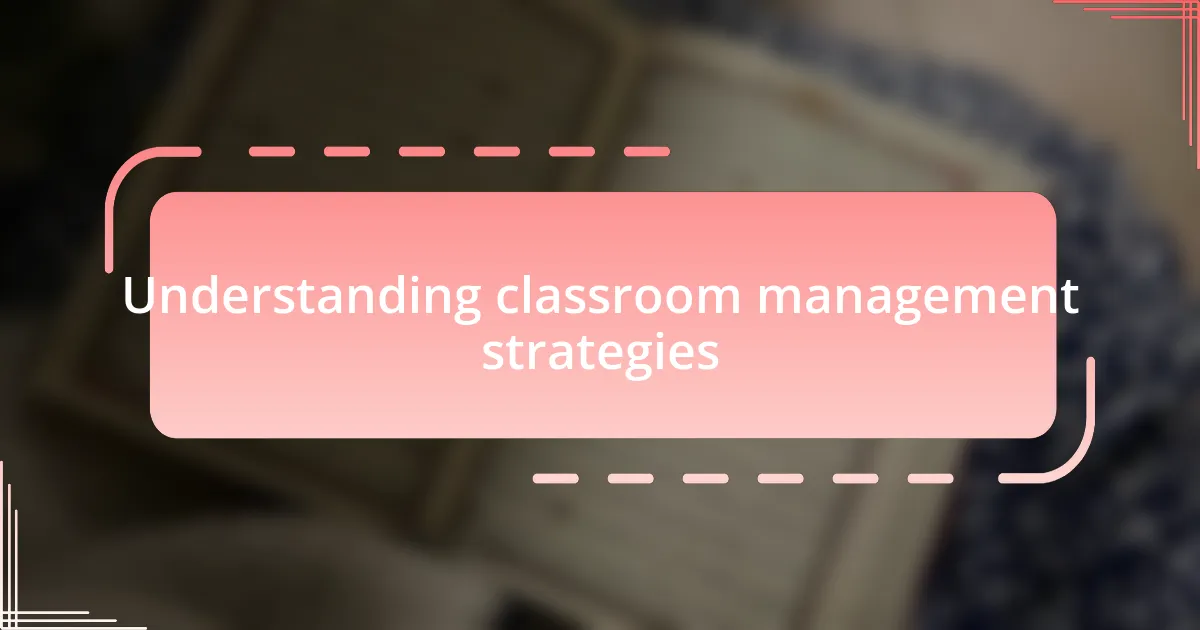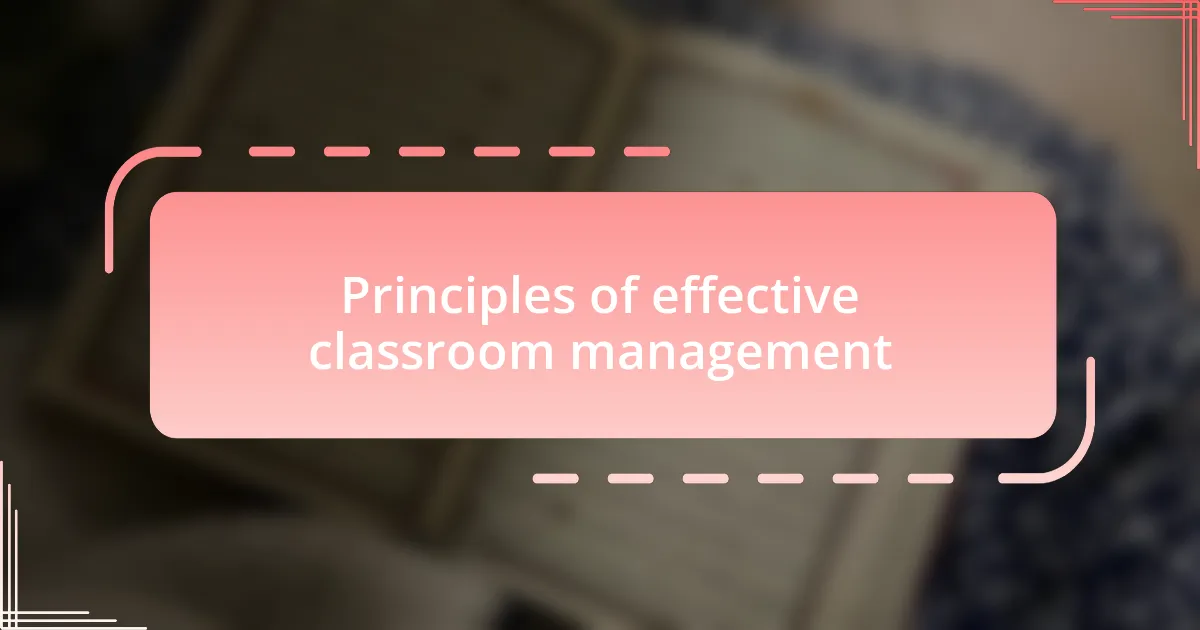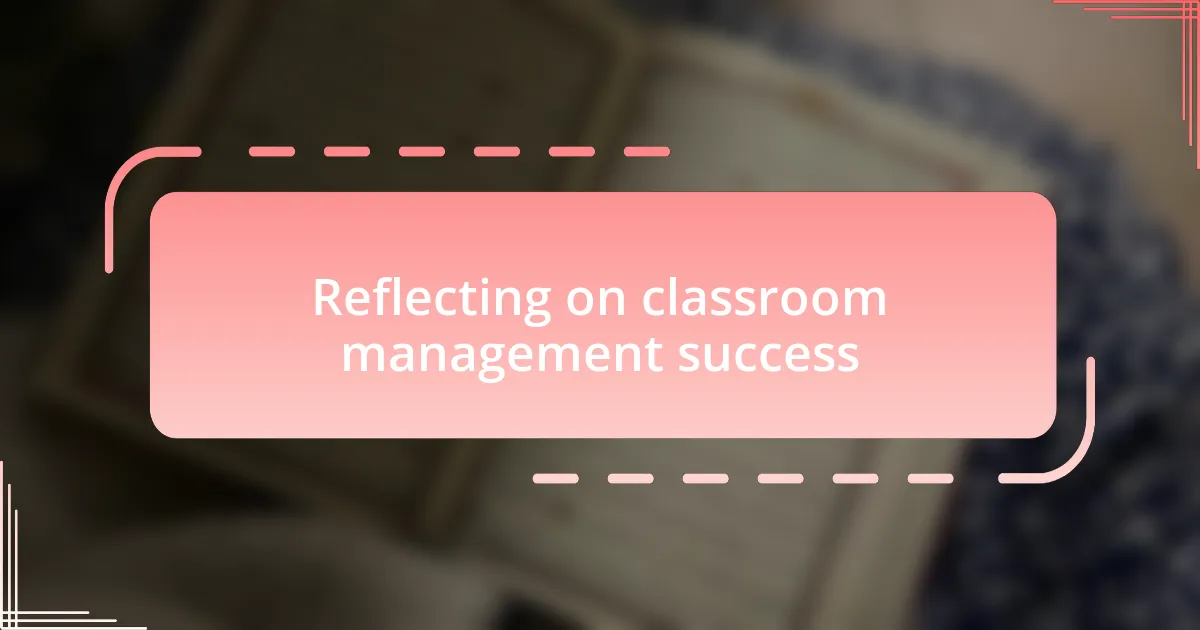Key takeaways:
- Implementing visual behavior charts and established routines can significantly enhance student engagement and reduce disruptions.
- Involving students in creating classroom agreements fosters ownership and adherence to guidelines.
- Consistent enforcement of consequences and positive reinforcement can transform classroom dynamics and motivate students.
- Embracing diverse learning styles through differentiated instruction and culturally responsive teaching can lead to increased engagement and a stronger classroom community.

Understanding classroom management strategies
Classroom management strategies are more than just rules; they shape the environment in which students learn. I remember a time when I implemented a simple yet effective strategy: creating a visual behavior chart. It not only kept students accountable but also engaged them in a way that sparked their interest. Have you ever noticed how a little clarity can transform a chaotic classroom into a thriving learning space?
Another powerful strategy I’ve found is establishing a routine that students can anticipate. I recall the relief on my students’ faces when they knew what to expect each day. It made them feel secure and led to fewer disruptions. What strategies do you currently use, and how do you think an established routine could change the dynamics in your classroom?
Building strong relationships with students is crucial for effective classroom management. In my experience, taking a few minutes each week to check in with them personally not only fosters trust but also enhances their willingness to participate. Can you think of a time when a simple connection lifted the atmosphere in your classroom?

Principles of effective classroom management
Effective classroom management revolves around clear expectations. I recall a time when I introduced a set of classroom agreements crafted collaboratively with my students. The sense of ownership they felt transformed the way they adhered to these guidelines. Have you ever thought about how involving students in setting expectations could empower them?
Another essential principle is consistency in enforcing those guidelines. I learned this firsthand when I struggled to maintain the same consequences for misbehavior. Once I found my footing and applied consequences uniformly, the classroom atmosphere shifted dramatically. It made me wonder: how would your students respond if they knew you were serious about consistency?
Finally, incorporating positive reinforcement can make a world of difference in classroom dynamics. I discovered that acknowledging small achievements led to an increase in overall engagement. When students feel appreciated, they tend to motivate themselves and their peers. How often do we take the time to recognize those little victories in our classrooms?

Techniques for managing diverse classrooms
Managing a diverse classroom requires techniques that honor and embrace the variety of backgrounds and learning styles present. I once had a student who struggled with traditional learning methods. By integrating visual aids and hands-on activities, I watched them thrive in ways I hadn’t imagined possible. How often do we consider the different ways students learn when planning our lessons?
Differentiating instruction was another game changer for me. I vividly remember a group project where students could choose their roles based on interest and strength. This not only fostered collaboration but also allowed each student to contribute in a way that felt authentic to them. Isn’t it fascinating how a little flexibility can lead to increased engagement?
Culturally responsive teaching has also played a crucial role in my approach. During a unit on religious traditions from around the world, I encouraged students to share their own cultural practices and beliefs. The conversations that ensued were enlightening and built a deeper sense of community in the classroom. Have you tried connecting lesson content to your students’ own experiences?

Reflecting on classroom management success
Reflecting on classroom management success involves looking back at those moments when everything clicked. There was a time during a particularly challenging lesson when I noticed my students were distracted and disengaged. Instead of pushing through, I paused the lesson to ask them what they found interesting. The energy shifted, and our discussion revealed insights that reshaped my entire approach. Isn’t it astonishing how a simple question can turn the tide?
In another instance, I implemented a reward system that celebrated positive behavior rather than merely punishing disruptions. The first time a student earned recognition, their eyes lit up with pride. Witnessing their motivation to not only improve personally but uplift their peers was a testament to the power of acknowledging success. How often do we reflect on the impact of recognition in our classrooms?
Finally, I distinctly remember a lesson that involved group discussions on ethical dilemmas. I set clear expectations for respectful dialogue, but I didn’t anticipate the level of investment it would invoke. As students shared personal stories tied to the topic, I saw them actively listen and engage, creating a sense of trust and collaboration. Have you tried facilitating discussions that resonate with your students’ values? These experiences underscore the importance of creating an environment where students feel valued and heard.